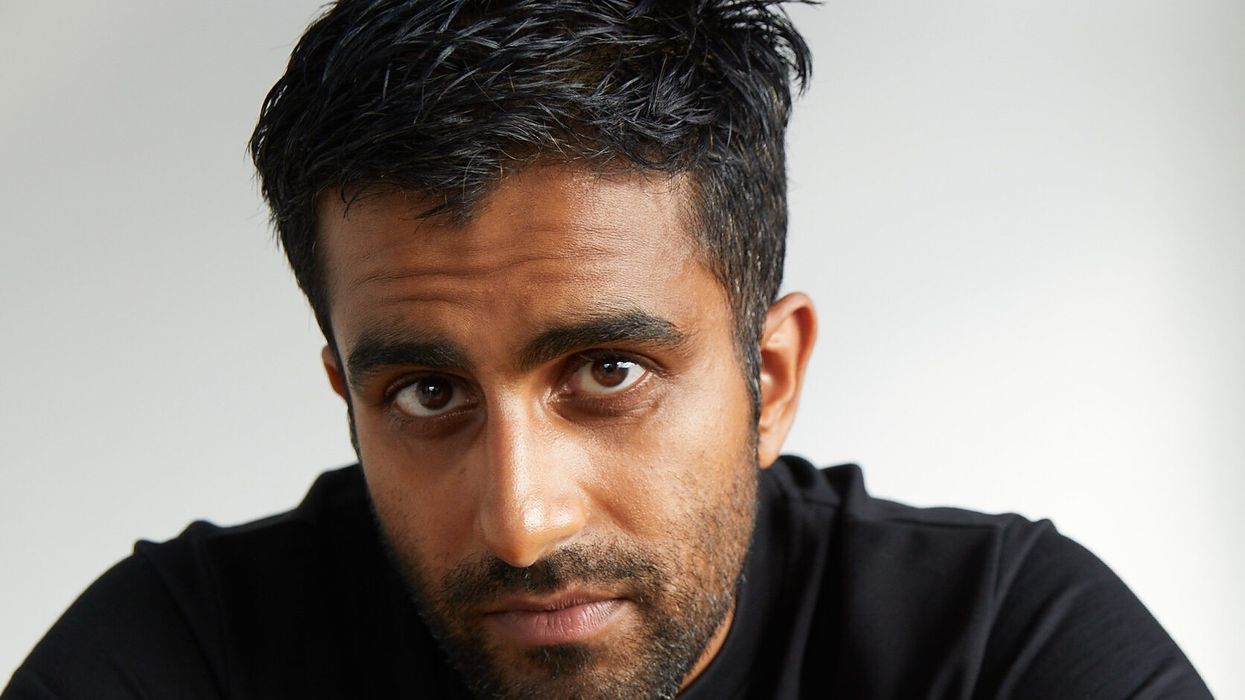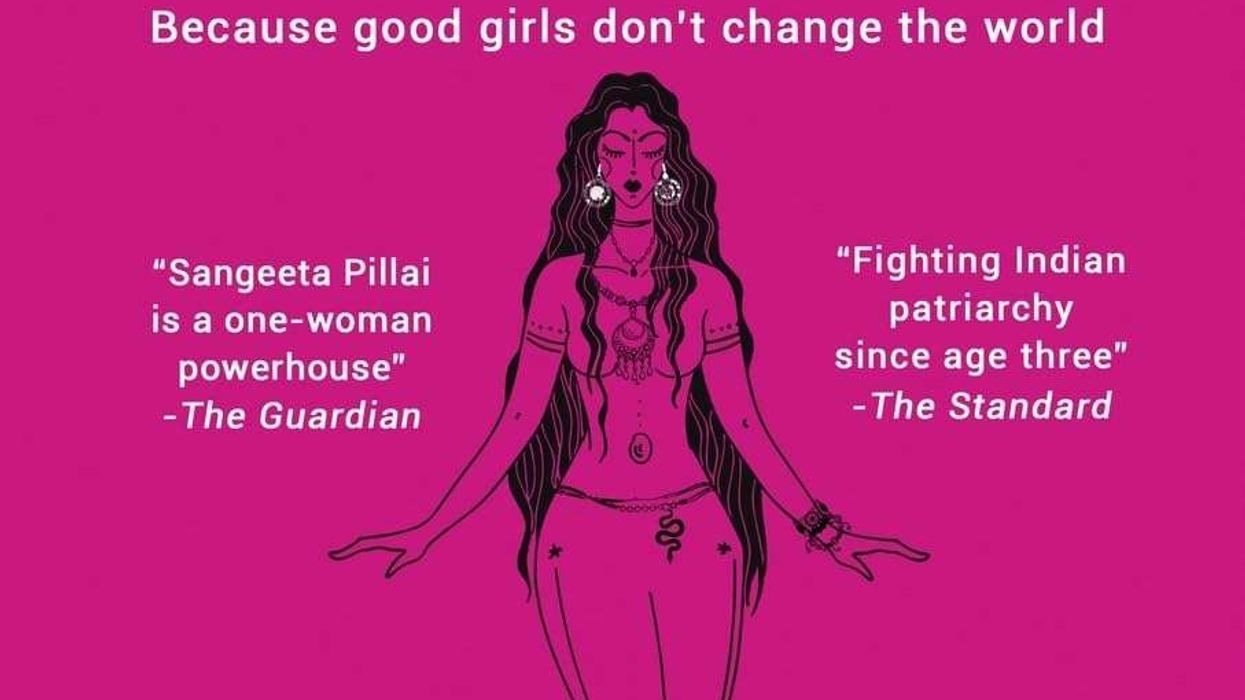BALLY GILL has spent the last few years starring in the critically acclaimed shows Sherwood and Slow Horses, as well as the hit movie, Allelujah.
Having made his name playing Romeo in The Royal Shakespeare Company’s (RSC) production of Romeo and Juliet in 2018, Gill told Eastern Eye he is glad to be back on stage with The Harmony Test, which starts at Hampstead Theatre on Friday (17).
Gill admitted there was a “massive gap” where he didn’t work and was left feeling like the theatre industry “didn’t really know what to do with me” despite winning the Ian Charleson award for best actor for his performance as Romeo.
“I go through phases where I get frustrated when it ain’t happening or you’re going in for things and they say they want diversity, but they don’t really want diversity,” said Gill.
“They say it’s open casting, but then they’ll go for someone that has a name (well-known). Sometimes the shows aren’t really catered for you to be in them and that’s a constant battle around politics, around what things are being produced on what things aren’t being produced”.
The 31-year-old played Oberon/Theseus in the RSC’s production of A Midsummer Night’s Dream at the Royal Shakespeare Theatre, Stratford-upon-Avon, in January.
In The Harmony Test, he plays one of the lead roles alongside Pearl Chanda (The House of Bernarda Alba, National Theatre; Sea Creatures, Hampstead Theatre); Jemima Rooper (One Man, Two Guvnors, National Theatre; Little Shop of Horrors, Regent’s Park Open Air Theatre); Milo Twomey (Winter Solstice, Orange Tree Theatre) and Sandro Rosta who is making his professional debut.
Gill believes actors of south Asian heritage are actually more likely to get major roles in theatre, than in TV or film.
“The roles in theatre are so much better for me than the roles in TV and film,” he said.

“I get to do these parts that allow me to spread my wings in terms of the challenges of good roles; TV and film feel like they’re still a little bit far behind.
“Don’t get me wrong, you get a project here and there, and I know I’ve got it so much better than my peers that are older than me who, when they were coming up, had to take stereotypical roles or there weren’t any roles for them.”
Gill plays Kash in The Harmony Test, a newlywed who wants to start a family with his partner Zoe.
Zoe’s preference is to opt for fertility plans, vitamin supplements and a strict diet, while Kash seems intent on following the advice of someone he met in Holland and Barrett.
Their family planning is further complicated when they meet older couple and empty-nesters, Naomi and Charlie, who have been married for two decades. Naomi, frustrated and lonely, heads to the gym in search of a new lease of life. There she encounters Rocco – a younger personal trainer willing to take a “hands-on approach to the job”.
The play’s title comes from the harmony test, a non-invasive prenatal screening that checks for conditions such Down Syndrome. It also alludes to the struggles of the two couples to keep harmony in their relationships.
“This a young couple are trying to conceive, and we explore the complications of what starting a new family can ensue. And that is then juxtaposed with another couple who have been married 20 plus years; they have a daughter who’s gone to university and the demise of that relationship.
“There is a real juxtaposition of a relationship that starts with wanting to have a child and then one that’s had the child and fallen out of love with each other and everything that goes with the breakup of a connection and relationship.
“It’s all done in a very comedic, but also heartwarming and touching way of telling the story about these people in London.”
Gill revealed that he could relate to what his character Kash is going through as he is in a similar position in his own life.
“When I read it, it was so recognisable. The character Kash is an actor, so he’s going through the same sort of thing I am going through as a young actor, the same age, same part of my life where my partner and I in real life have had those conversations about kids, how can I do that being in this industry? What does that look like? The pressures that are put upon us – it really struck a chord with me.
“It changes your life (having a child). You’re not looking after yourself anymore or your partner, it’s actually another being and you have to give away a part of yourself, your ego and whatever you have for this other being who is now your responsibility pretty much until you die.
“I am always constantly asking people in this industry about having children, because we go away to do film and TV projects, it’s never really in the same spot. That’s something that’s interesting to me, as in, how do we balance that.”
Gill’s roles have enabled him to share scenes with some of the finest talents in the industry such as Oscar winner Dame Judie Dench in Allelujah.
“That was my first ever film, which was quite overwhelming. You get the call sheet and it says you got a two hander (scene between two actors) and it’s you and Judy, for instance, and then it’s you and Derek Jacobi and then Jennifer Saunders, and then Russell Tovey and then David Bradley – all these legends of British acting,” he said.
Gill revealed his theatre experience came in handy dealing with the pressures of Allelujah, his first film, especially as it is based on the Alan Bennet’s play of the same name.
“It felt very much like a theatre production. There was a lot of theatre people on the film,” he said.
“Richard Eyre, the director, very much thought about process and rehearsal. I was in conversation with him for months about character. It was really nice to feel like the first film I did was actually very theatre led.”
An actor he’s eager to share screen space with is his Slow Horses co-star, Gary Oldman.
“Gary Oldman, I’ve done four seasons of the show and I’ve not met him yet, which is sad. We went to the same drama school, obviously different times, but he’s a Rose Bruford College boy as well.
“I’ve been trying to get close, sometimes when we’re on set and you can kind of go between the trailers and I am like, ‘is Gary here? Is he around?”.
Gill has done projects in the UK as well as the US. He will next be seen the mini-series Under the Bridge starring academy award nominee Lily Gladstone (Killers of the Flower Moon). Following that will be the TV series adaptation of the 1994 Tom Cruise, Brad Pitt film Interview with the Vampire.
Casting for these shows are often done virtually, meaning Gill travels to the US or Canada, where Under the Bridge was located, for filming.
“Self-taping in zoom is really what happens now. It’s very rare, but sometimes they do fly you out, but I’ve never needed to – which is good – otherwise, you make that trip all the way to LA and you don’t get the part,” he laughed.
“I’m fortunate to have British experiences – theatre, TV and film, and then, obviously, American stuff as well that shoots in Europe and all over the world.”
The Harmony Test runs at the Hampstead Theatre from Friday (17) to June 22.












